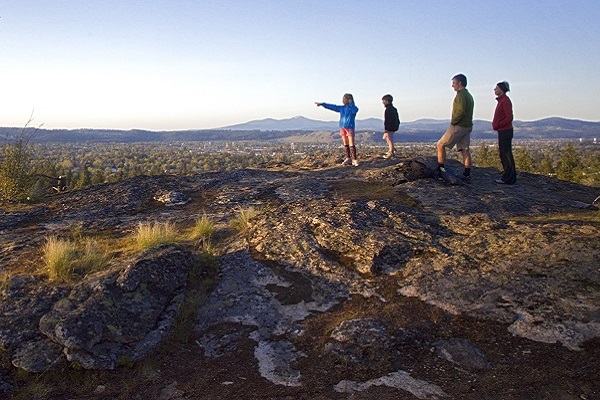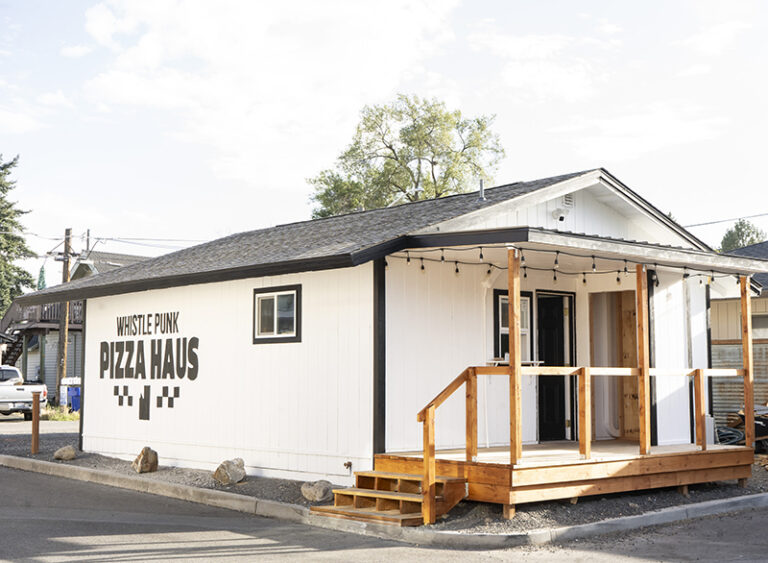Look into your phone screen, and the city around you transforms into a land of magical creatures. You, an elite trainer on one of three worldwide teams, capture these creatures and build a fighting force to help your team reach world domination one battle at a time, facing off with creatures you’ve never encountered at landmarks in your own town.
That’s the long version. The short version of Pokémon GO is that people go outside to play video games now and it’s awesome. It’s a big scavenger hunt: Trainers gather supplies from hidden murals, forgotten plaques, and historic locations throughout their city. The game measures distance traveled using GPS (not steps, like a fitness app). With distance walked, you can hatch eggs, adding rare creatures — and sometimes really lame ones — to your collection. But there’s a catch: Distances won’t count if they’re traveled too fast. Driving definitely won’t cut it, but biking at a leisurely pace can give you a serious edge over pedestrian players.
Let’s first get this out of the way: Netizens across the globe have pointed out that some people who play Pokémon GO aren’t aware of their surroundings at all times. Shuffling along with noses in their phones, many Pokémon GO players resemble zombies. More likely, they’re teenagers leaving their basement rooms for the first time ever. Due to lack of socialization, the zombieteens generally don’t know how to navigate public walkways without endangering themselves and others — but it’s still really good for them to get some vitamin D in their systems and meet other zombies.
Trying to catch Pokémon while cycling involves doing something on your phone while riding, so it’s not to be taken lightly. Still, players everywhere have dusted off their Huffys to get ahead in the game — and it is possible to safely play on a bike. To do this, it’s critical to mount your phone on your handlebars. Ideally, the app’s “vibrate” setting can be felt through your handlebars so you don’t need to look at your phone. If not, crank up the volume, put one earbud in (only one, so you can hear what’s going on around you with the other ear).
Stick to side roads or head to Riverfront Park, Spokane’s Pokémon hub. I met 26-year-old construction worker Eli Swanson while he was rolling along the “bikes only” lane in the park with his phone mounted on his handlebars. At the time, he was an impressive level 29 trainer — though I’m sure he’s far surpassed that by now — and said he’d once spent nine hours hunting Pokémon in the park. The gyms (battlegrounds) and pokéstops (supply spots) sprawl across the park, so walking between them in time to catch the action can prove difficult and exhausting. Swanson mainly rides his bike to get between pokéstops, which will dispense supplies anew every five minutes, though he’ll pull over to catch a Pokémon on occasion.
When you encounter a critter, there’s no need to screech to a halt and cause an accident; they stay visible for quite a distance. Turning off the Augmented Reality (AR) setting makes them easier to catch from a distance. It takes several seconds for the critters to appear on your screen, though, so catching them all is still best done on foot or riding at a walking pace.
If you’ve made up your mind that Pokémon GO is the worst thing ever to happen to society, try viewing it as an opportunity to introduce the younger generation (and sedentary adult nerds) to the joys of active living. The wisdom bestowed upon us by Ice-T does not apply here: In this case, it’s the player, not the game, that’s the problem. Pokémon GO can be played just as effectively with full situational awareness. In fact, the social engagement — throngs of players gathering at parks and hidden monuments, breathlessly alerting strangers to the location of a rare creature — is what makes the game so much fun. //
Erika Prins Simonds bicycles as her primary mode of transportation. You can find more of her writing at erikaprins.com.













